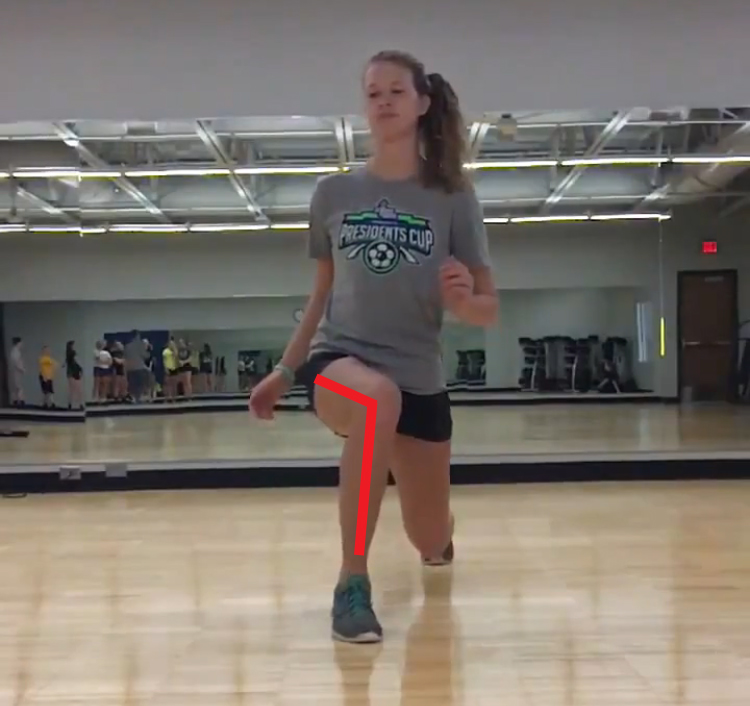Dr. Tyler Turbak and I have completed the first round of ACL C.A.M.P. and were lucky enough to work with some pretty awesome kids during the 6-week injury prevention program. Attendance was high, the effort was great, and the kids seemed to have almost as much fun as Tyler and I.
Here is what participants had to say about their experience with the program that concluded on 5/5/17:
- “I feel like I got stronger and can control my body better.”
- “I liked all of the strengthening. I honestly enjoyed it all.”
- “I feel like my balance and control is way better than before.”
- “I can already see progress in soccer practice.”
- “I think this program would strongly benefit athletes.”
ACL C.A.M.P. (Coaching Athletes Movement Principles) is an exercise program designed to help reduce the risk of lower extremity injuries when young athletes are exposed to sports related activities like jumping, cutting, and landing. Interestingly enough, most ACL injuries happen in a non-contact situation.1,2 Multiple studies have demonstrated how injury prevention programs can decrease the number of ACL tears, and some also focus on limiting hamstring and ankle strains/sprains as well.3-9
Included in ACL C.A.M.P. is pre and post testing using multiple modes of assessment to track progress. We were able to see some pretty cool changes. All 10 of the participants that post tested met or exceeded the criteria of being deemed “at a decreased risk of injury”.10 We also performed video analysis of lunging and jumping mechanics and example photographs of those can be seen below:


“When comparing the above two images, I draw your attention to the red lines inserted on this participant’s knee. One cue we used consistently with the athletes was to limit a position called “knee valgus.” This position has been shown to put increased stress on the ACL and may increase the potential for injury. The smaller angle on the right image shows improved knee positioning compared to the pre-test lunge. Also notice the control of her trunk/torso. In the right image she is centered over herself with a lower center of gravity and equal hip height. The left image shows a trunk lean to the athlete’s right and uneven hip height.” – Tyler Turbak, DPT


"These images depict the same participant as she is about to take off before jumping. Notice on the left that her knees are touching each other prior to take off. Again, this position in both landing and take-off has been shown to be stressful on the knee joint and may be an indicator for propensity for injury. On the right her knees are better positioned and she has a lower center of gravity prior to take off." – Tyler Turbak, DPT
Prairie Lakes Rehabilitation Services is introducing ACL C.A.M.P. as a free program held at the Prairie Lakes Wellness Center and registration for future sessions can be found here. As demand for this service increases, we may have to offer it for a nominal fee. Class size is limited so that enough oversight and coaching can be done for the benefit of the participants. We recommend that athletes participate in this program 6 weeks prior to their competitive season and then use a selection of the exercises as a warm-up 3x’s weekly.
If you are a coach that is interested in how this can be implemented into your practices, or want to know if we can come to you and offer this service, please call 605-882-7700 for team pricing options and availability.
Resources:
- Louw QA, Manilall J, Grimmer KA. Epidemiology of knee injuries among adolescents: a systematic review. Br J Sports Med. 2008; 42(1):2-10.
- Renstrom P, Ljungqvist A, Arendt E, Beynnon B, Fukubayashi T, Garrett W, et al. Non-contact ACL injuries in female athletes: an international Olympic Committee current concepts statement. Br J Sports Med. 2008; 42(6):394-412.
- Chappell JD, Limpisvasti O. Effect of a neuromuscular training program on the kinetics and kinematics of jumping tasks. Am J Sports Med. 2008; 36(6):1081-6.
- Hewett TE, Ford KR, Myer GD. Anterior cruciate ligament injuries in female athletes: Part 2. A meta-analysis of neuromuscular interventions aimed at injury prevention. Am J Sports Med. 2006; 34(3):490-8.
- Sadoghi P, von Keudell A, Vavken P. Effectiveness of anterior cruciate ligament injury prevention training programs. JBJS American volume. 2012; 94(9):769-76.
- Yoo JH, Lim BO, Ha M, Lee SW, Oh SJ, Lee YS, et al. A meta-analysis of the effect of neuromuscular training on the prevention of the anterior cruciate ligament injury in female athletes. Knee Surgery, sports traumatology, arthroscopy. 2010; 18(6):824-30.
- Grimm NL, Jacobs JC Jr, Kim J, Denny BS, Shea KG. Anterior Cruciate Ligament and Knee Injury Prevention Programs for Soccer Players: A Systematic Review and Meta-analysis. Am J Sports Med. 2014.
- Eils E, Schröter R, Schröder M, Gerss J, Rosenbaum D. Multistation proprioceptive exercise program prevents ankle injuries in basketball. Med Sci Sports Exerc. 2010 Nov;42(11):2098-105.
- Sebelien C, Stiller C, Maher S, Xianggui Q. Effects of Implementing Nordic Hamstring Exercises for Semi-Professional Soccer Players in Akershus, Norway. Orthopaedic Practice. 2014; 26(2):90-6.
- http://www.rehabmeasures.org/Lists/RehabMeasures/DispForm.aspx?ID=1271
